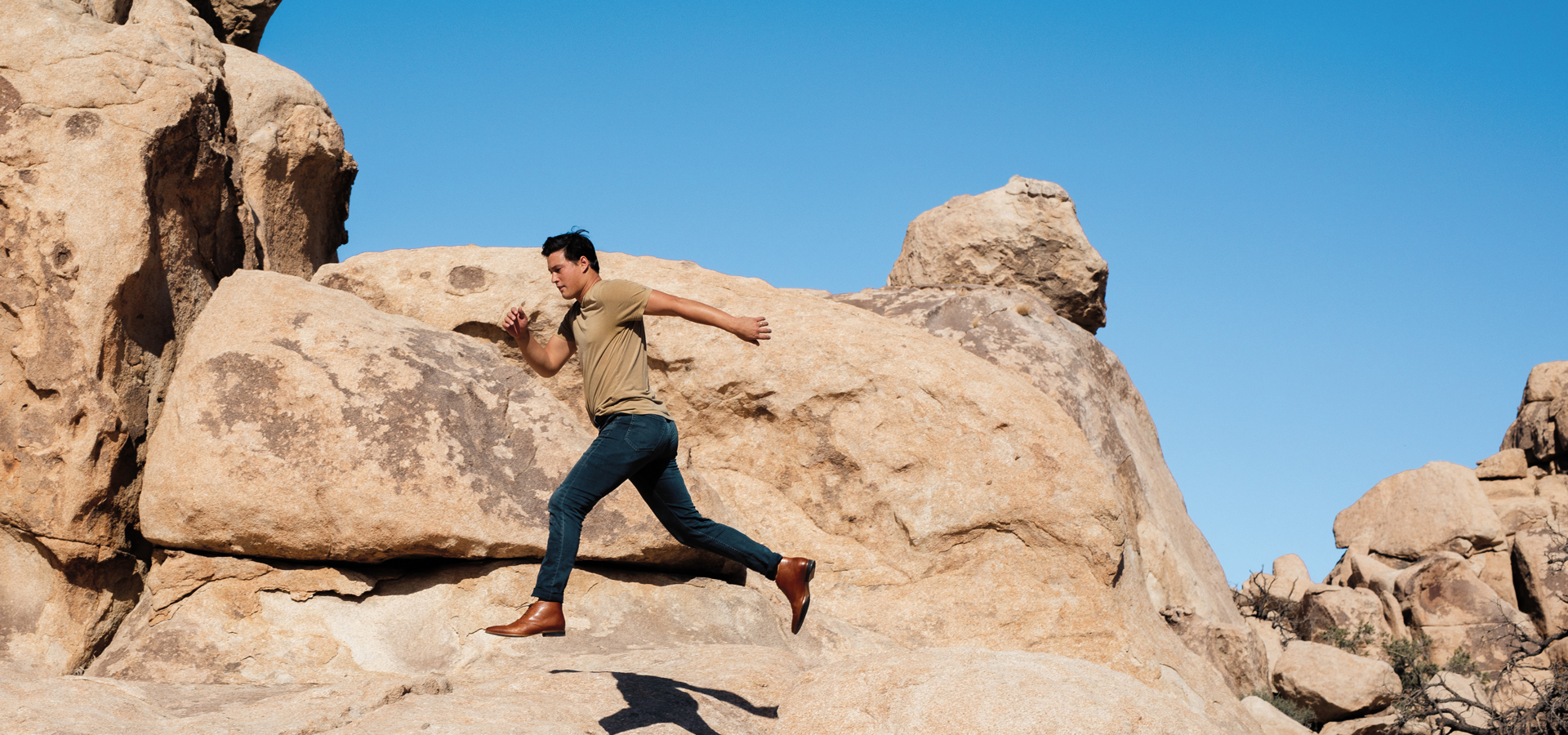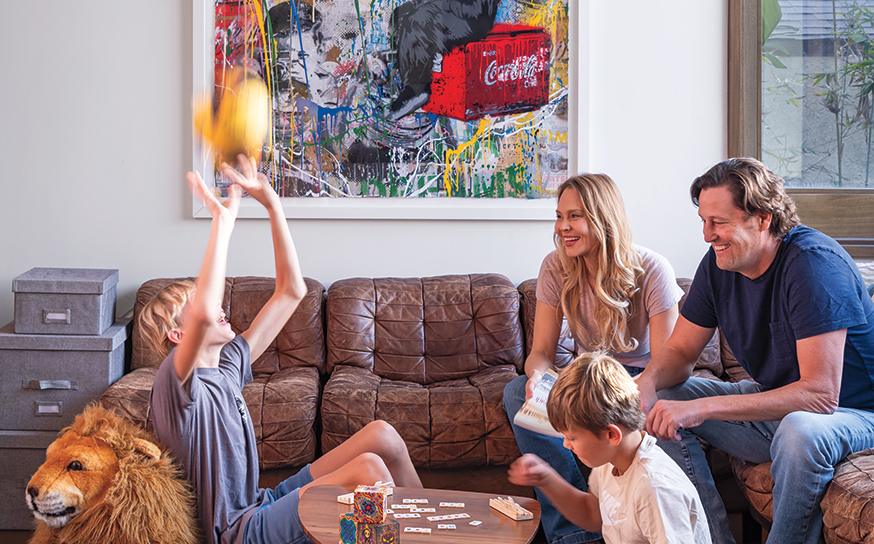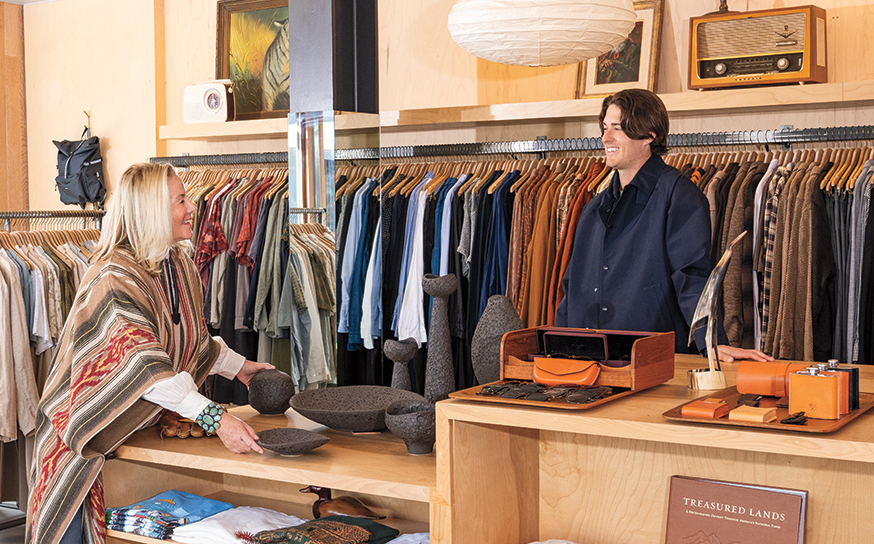Wolf & Shepherd’s Justin Schneider puts the classic dress shoe to the athletic test
Meet the leader of the pack.
- CategoryPeople
- Written byTanya Monaghan
- Photographed byHope Schneider
Justin Schneider is a phenom—smart, ambitious, good-looking and super-athletic. It would be natural to think that, for someone with so many gifts, everything came easily to him. But it is his unstoppable drive and insatiable work ethic that sets him apart and has brought him true success.
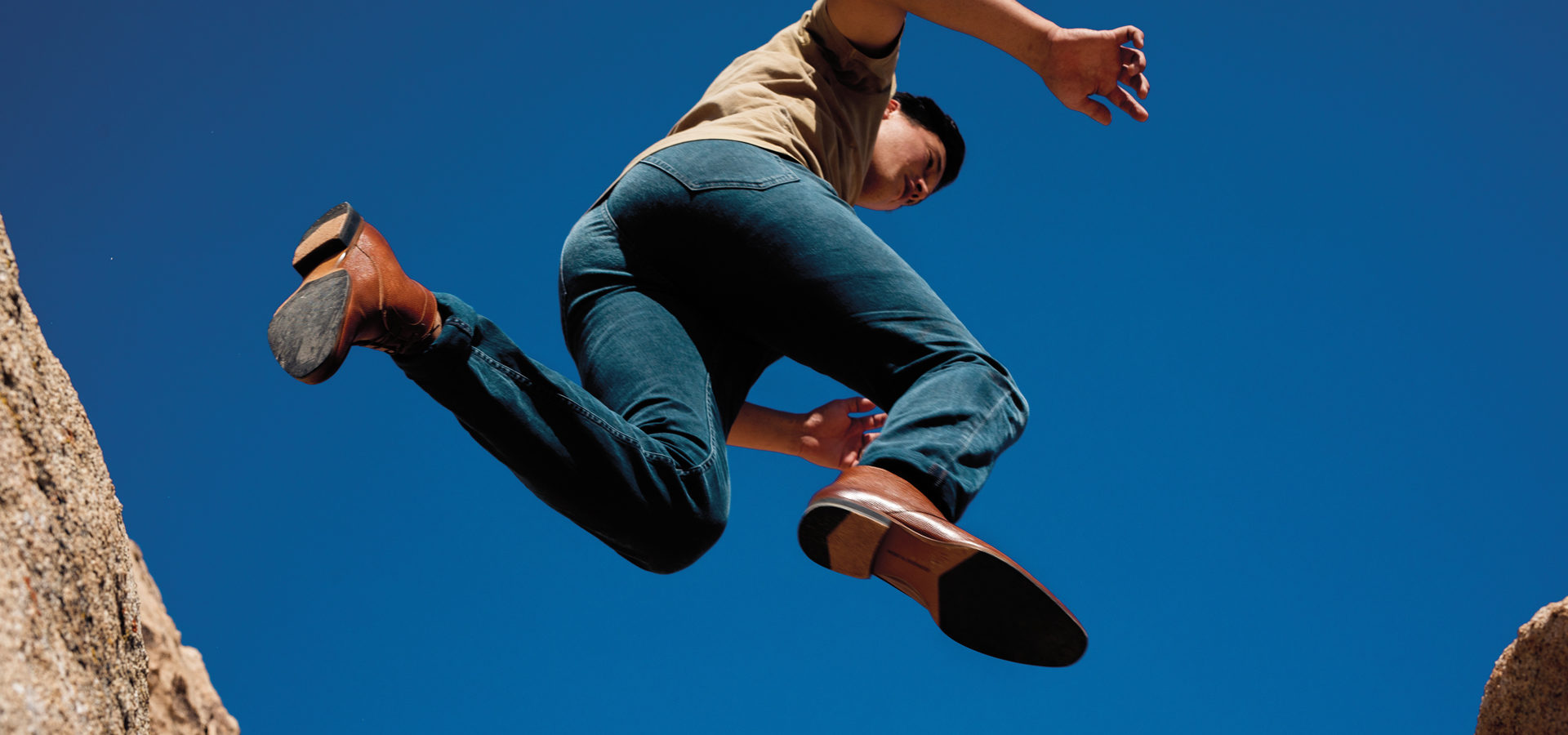
One of Forbes’ 30 Under 30, Justin’s path to launching his breakout dress shoe company, Wolf & Shepherd, was anything but standard. But being an elite athlete, he has sailed over every hurdle. His shoes have been worn by celebrities such as Brad Pitt, Jeremy Renner, Joe Jonas, Liam Hemsworth and Luke Hemsworth. But rather than resting on that success, he keeps his feet on the ground and continues to work hard.
Justin won a scholarship for decathlon at Notre Dame, where he studied architecture initially before moving into industrial design. He would train seven hours a day: wake up at 6 a.m., go to class, use lunch to work out, go back to class, have an afternoon snack, work out, have a heated ultrasound or ice bath, go to the studio and work until midnight. Then wake up at 6 a.m. and do it all over again.
For Justin and his family, that’s just how life was … you wake up and get right to work. Raised in Atlanta, Georgia, Justin is one of three children. His father is German and his mother Korean, and his drive for success appears to be genetic.
Justin’s mother was born in Seoul to a wealthy family that owned a large rice distribution company. But they lost all their money in the Korean War. Her father was a missionary and moved to the States post-war for a better life. In America, Justin’s grandfather planted churches, while his grandmother ran a tailor shop. His mother was also a phenomenally hard worker—she taught herself English and went on to study musical theory at Oxford. She would eventually become a celebrated concert pianist.
Back at Notre Dame, Justin recalls phoning her: “Mom, it’s so hard. There is more work than I can get done, and it’s just not fair.” His mother would say, “Do you want to know what’s not fair? The only time your dad and I had dates was when he would come to my studio while I was practicing the piano. I would play the piano all day and night until my knuckles would turn purple and blister because this is what it took to play the piano at such a high level.”
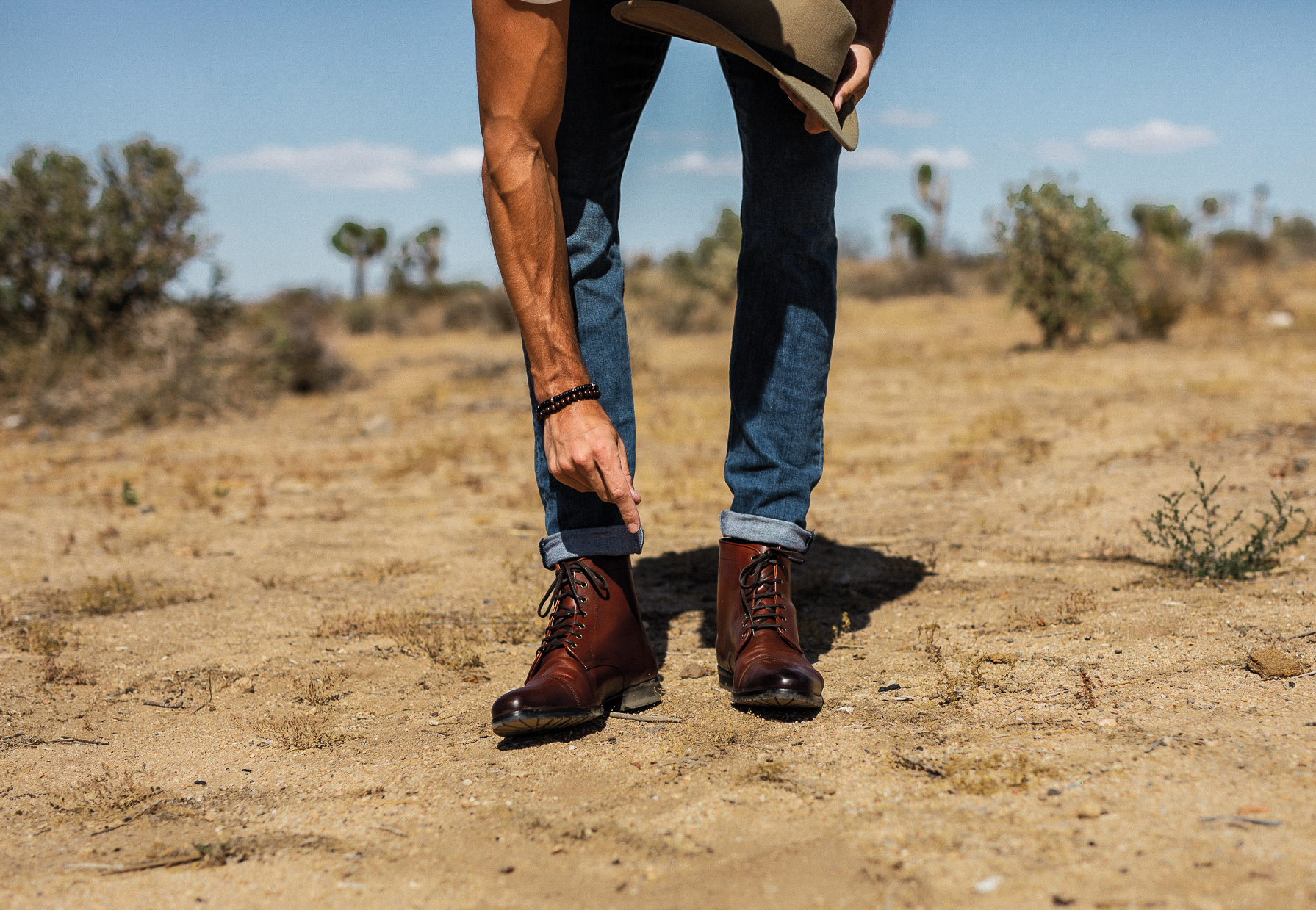
That bit of perspective helped him realize that, although exhausted and often in pain from training, he was all right and life wasn’t so hard. He felt grateful for his scholarship and his opportunity to get a superb education.
Although he had dreamed of being an architect, industrial design fit better with his goal of competing in the decathlon. He would train hard but still sponge up everything he could about design. If he truly loved architecture, he argued, he would get a master’s degree after school and figure out how to pay for it then. He wanted to become a runner—and in fact still holds the Notre Dame decathlon record—but figured that if he couldn’t make it, he could use his industrial design skills to design equipment for runners. A series of bad luck and serious injuries forced him into plan B.
Justin worked as a footwear designer in his junior year at college for the Adidas Group in Portland, Oregon. That experience helped him land a job after college with New Balance in their innovation department, working to create shoes that were faster, lighter and more comfortable. His directors would challenge him with questions like, “How can we inspire people to win? What are you going to do to make the athlete better? How do you make them feel like a hero?”
Everything was centered on elevating the athlete. The shoes needed to look good and feel good. The firm demanded an authentic improvement to the existing product they had, every time. With his background as an elite athlete and his years of industrial design study, Justin thrived in the space. In his first year after college, he designed a track shoe that Jenny Barringer Simpson wore when she competed in the 2011 World Championship Games. She won the 1,500m gold medal for the U.S. in those shoes.
Justin has adapted everything he learned as an athlete and designer into his Wolf & Shepherd dress shoes. Although he created his products with cutting-edge materials and technology, he also kept what was best about tradition. The wingtip, for instance, was invented by the Irish for hunting and entrenched its reputation as a more athletic shoe in the mind of the consumer when the Prince of Wales wore it to play golf in the 1900s. The Chukka boot was invented in 1941 when Nathan Clarke saw someone wearing these comfortable, flexible and breathable shoes in the desert. Queen Victoria’s shoemaker came up with the Chelsea boot with the vulcanized rubber (elastic )because it was easy to take on and off during riding and battle.
What is now considered formal footwear has rich traditions of practicality. However, the technology had not been improved for more than 100 years in some cases. So Justin asked, “What are we doing to make the shoe lighter, more comfortable and better? This is the direct approach we are taking with Wolf & Shepherd. Our goal is to inspire working professionals to succeed.”
Justin launched Wolf & Shepherd in 2015, but the path to get there wasn’t straightforward. He moved from New Balance to Reebok, where he worked on a collaboration between Reebok and National Geographic. As a result of that project, Justin first discovered his entrepreneurial talents.
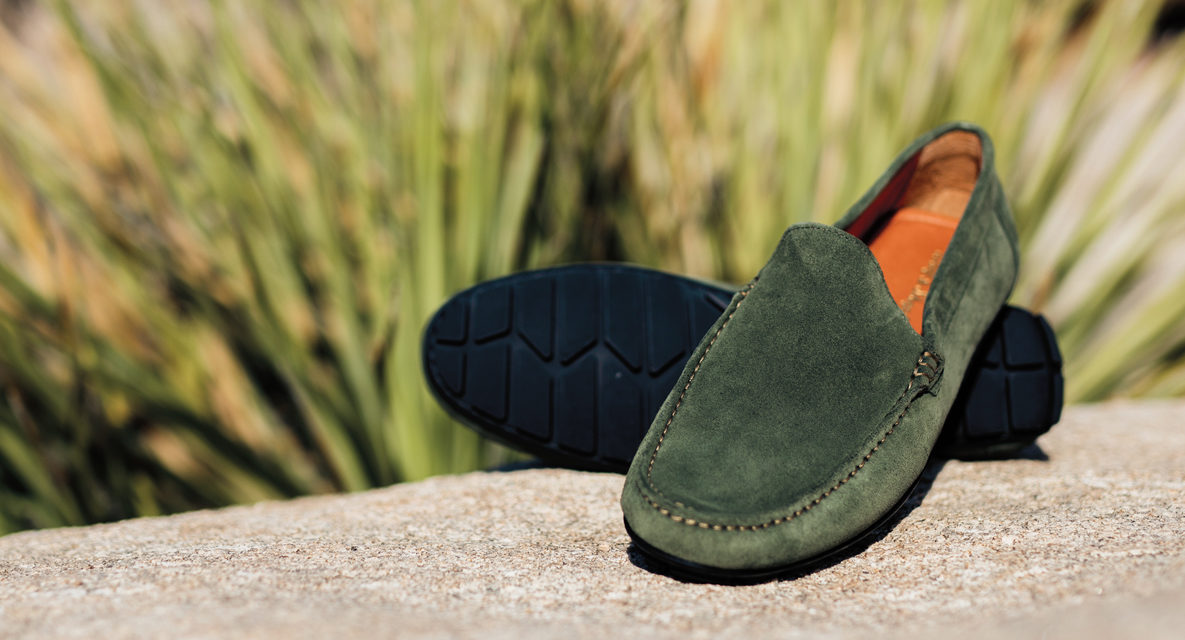
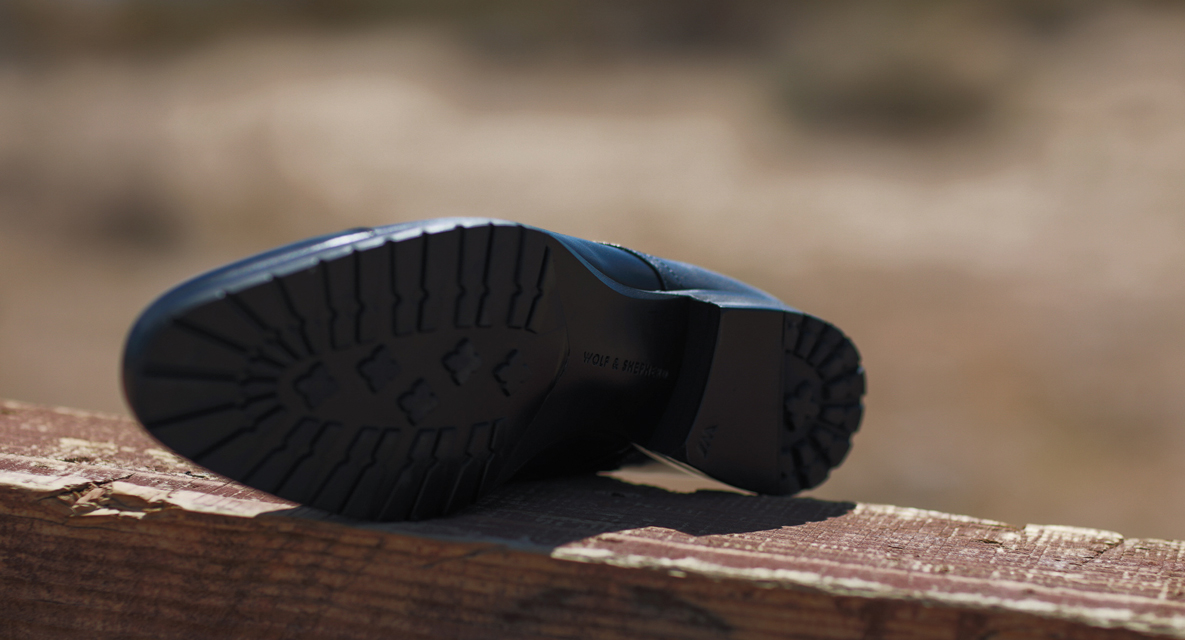
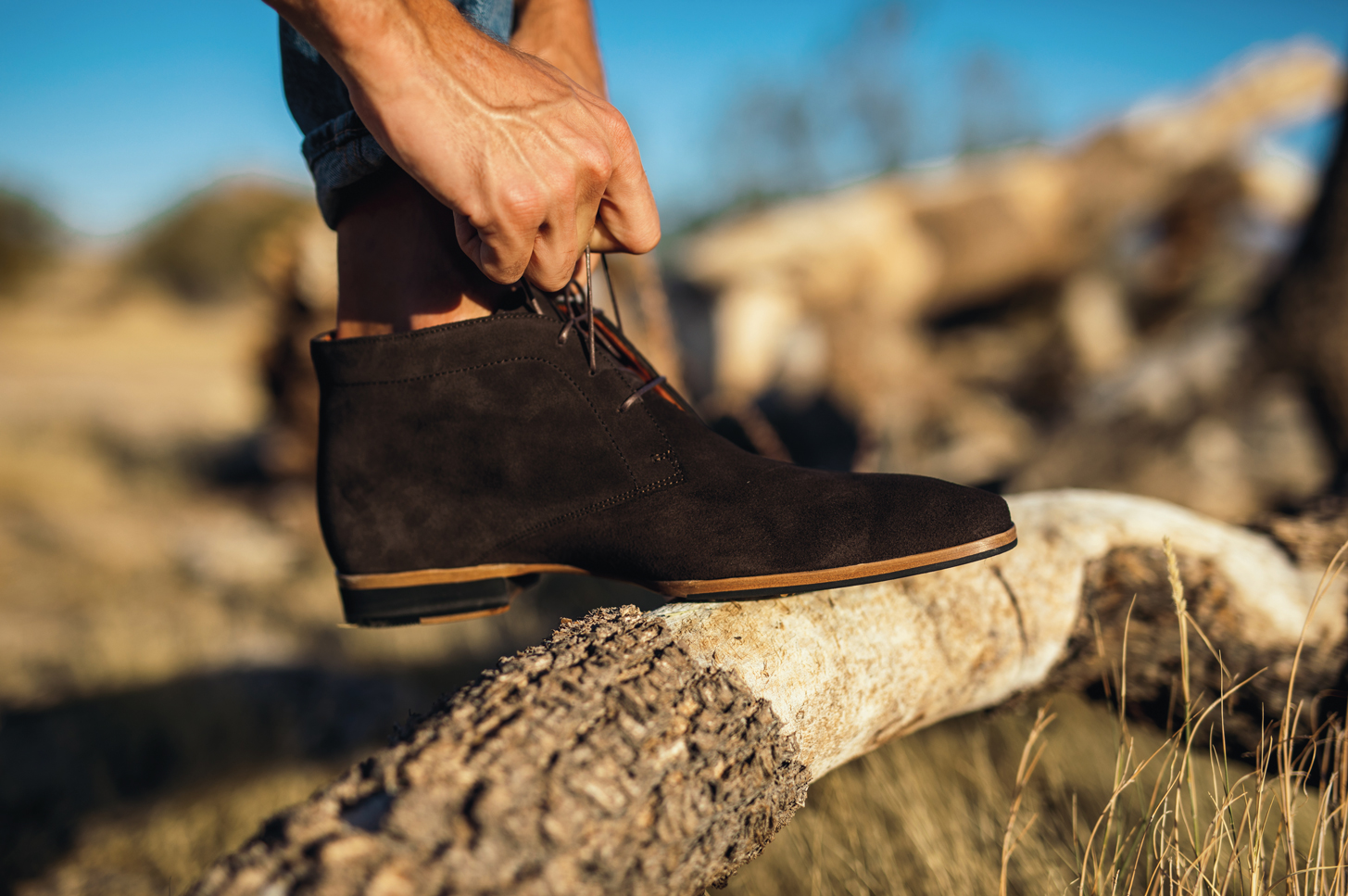
An organization called Madagascar Health and Environmental Research funded the creation of a medicinal guide of newly discovered plants that were alternative sources of protein to bush meat. Those plants were identified as a potential solution to relieving hunger caused by over-population in the country. Justin’s brother’s friend was running the organization and needed someone to take on the art direction aspect of the guidebook.
Justin jumped at the opportunity to take this pilgrimage and live somewhere totally different. His father had always told him, “Just be a sponge and absorb as much knowledge and information as you can, and then you can figure out later in life what it is exactly that you want to do.” He took this as one of these opportunities to gain another skill set.
Justin drew and painted 135 watercolors for the project, and just 10 days after he returned to the States he put on an exhibit in a local gallery. He invested everything he had in that show, inviting every magazine and publication in the area that might be interested. The event was a great success, and he sold enough to cover his costs and make a small profit. It encouraged him to begin selling the pieces as collections. Within six months he had made $70,000, which would become part of the initial investment in Wolf & Shepherd.
During this period he received an unexpected call from a good friend who lived in New York: “Justin, I just spent $600 on English-made dress shoes, and I hate them. I am 28 years old, my feet are killing me and I can’t even walk to work. I have been trying to break them in for weeks. Can you please just make me a pair of shoes that look this good but feel good too?”
Justin found the challenge interesting. He began cutting up some of his own dress shoes and running shoes to get close to the product—a technique he learned at design school.
Although Justin’s background was athletic shoes, he realized that most working professionals couldn’t wear those to the office every day. “What is the gear that allows us to perform? How can I help working professionals feel empowered in their competitive arenas? I realized there really hadn’t been a great demand for men’s dress shoes to evolve. People just wanted a good-looking shoe that retains that nostalgia and heritage. Heritage is important—and I am not trying to strip the tradition out of the shoe—but what matters to me is the question of how to incorporate technology to improve it but still retain the classic style.”
“You might not run a marathon in your dress shoes, but with ours you could! Our point is that you can do more in your dress shoes—walk comfortably to work, catch that train, run to the meeting. Ours is the story of concealed comfort.”
Justin is philosophical about merging the two worlds of athletic and formal wear, which is how he came up with his company’s name. “That’s the wolf and the shepherd. Wolves are driven, ambitious and never hesitate; they work in teams, but they are impulsive. They are young and hungry. And then you have the shepherd. Shepherds are guides. They are in the back room helping guide the sheep from point A to point B. We have these very adversarial personalities or characteristics but are on the same playing field. Our brand is built on how we juxtapose these two adversarial components into one thing. For example, what would it look like to combine the classic style (the shepherd) and an athletic fit (the wolf)? Or to combine ambition (the wolf) and leadership (the shepherd)? We think you need both of these characteristics to succeed. You need to be ambitious, but you need to be humble enough and wise enough to make the right decisions.”
He continues, “Wolf & Shepherd does that through helping our customers feel lighter on their feet. You might not run a marathon in your dress shoes, but with ours you could! Our point is that you can do more in your dress shoes—walk comfortably to work, catch that train, run to the meeting. Ours is the story of concealed comfort.”
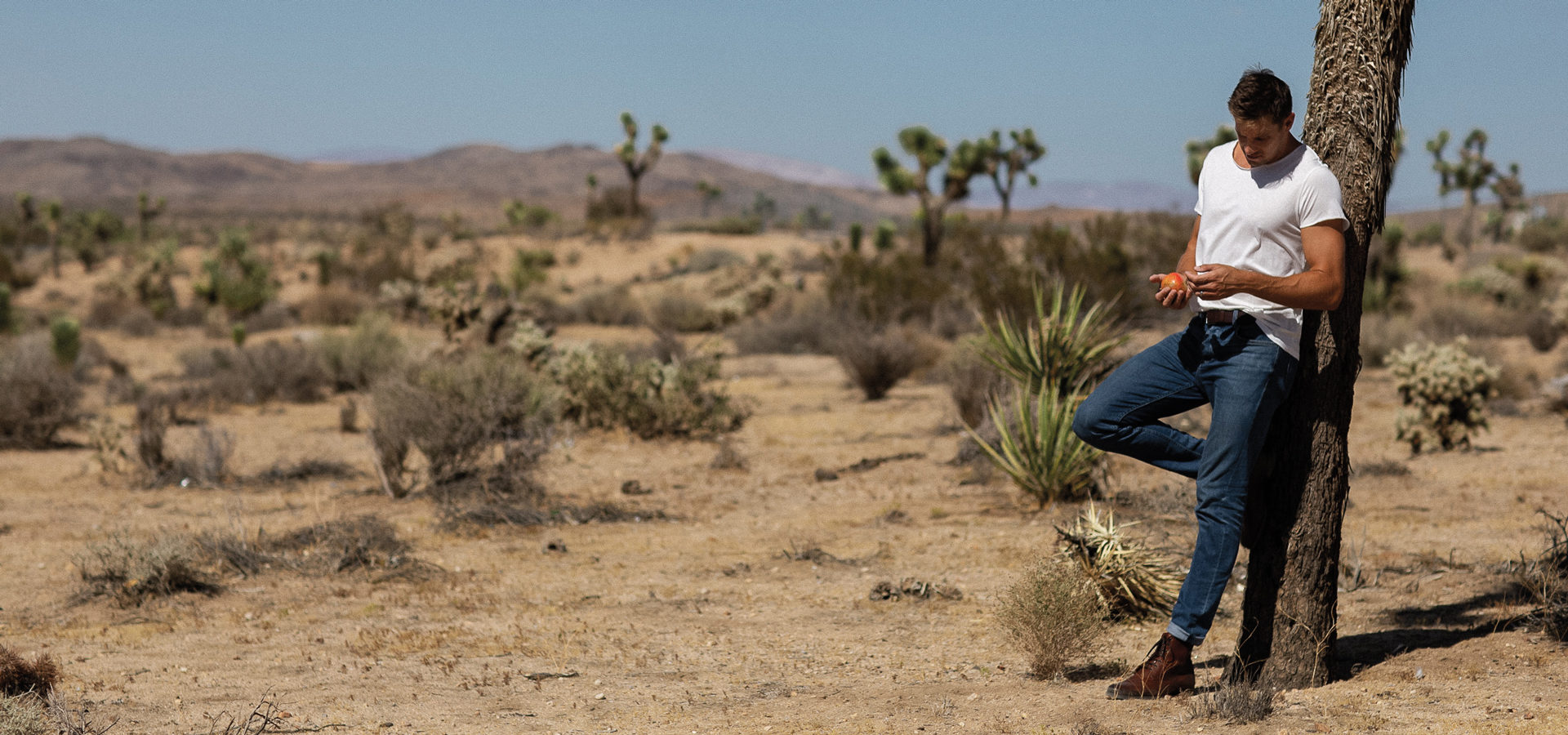
As part of a marketing strategy, in 2016 Justin had the brilliant idea of running a road race in Wolf & Shepherd dress shoes to show how comfortable they are. He documented a friend, former Syracuse runner Juris Silenieks, running a marathon in his Wolf & Shepherds. Justin thought, “If he could just finish the race, that’s got to be a great testament to how comfortable the shoes are.”
One week before the race—and with only one pair of shoes left in Juris’ size—they were able to register him. Juris gladly accepted for the novelty of it: a free race entry and the promise of a steak dinner at Justin’s parents’ home in Atlanta.
Justin and his team then sent a press release to 200 copywriters and editors of publications that might be interested in featuring this story. They got one response from a contributing writer at Forbes who happened to be in Atlanta at the time. Armed with bikes and GoPros, Justin had five of his local Atlanta friends film the race. Juris ran the entire race in Wolf & Shepherd dress shoes and dress socks and won by five minutes!
That night Justin’s wife edited the footage down to a 1.5-minute video, which they fired out to the same 200 copywriters and editors on the following Monday morning. The video went viral. They were contacted by the likes of Business Insider, Runner’s World, Sports Illustrated and 45 other publications. Many of them featured this outlandish story about a runner winning a race in dress shoes. The PR ploy turned out to be massively successful, even setting a Guinness World Record for the fastest half marathon in dress shoes.
Justin called Juris their “ringer,” which inspired the name of a shoe they came out with right after that race: the ringer loafer. Since then, all of Wolf & Shepherd’s shoe names refer to sports or speed. They moved from selling five dress shoes a week to selling five dress shoes a day, and grew by double-digit percentages each month for the next year and a half.
It was not all smooth growth, however. The beginning was very hard. Justin sold shoes to friends and family and individually called each person with his story to help get referrals. His customers weren’t only buying the shoe; they were also buying the story. They wanted to be a part of the journey.
Justin recalls one story about the challenges he faced early on. His first shipment of 80 pairs of shoes from the factory was stuck overnight in customs and already late. The shoes were destined for customers who had already waited eight months to receive them, and they were phoning Justin day and night to check on their orders.
Unfortunately, during that overnight stay in customs a soap company’s boxes fell on the shoe cartons and ruined them. Downhearted but determined, Justin decided to take matters into his own hands. With only $800 cash in the business bank account, he flew to the factory in Mexico. They told him they could not deliver on time and had to start over again.
In solution mode, Justin inspected the shoes and saw that the soles were fine. He walked around the factory and found a box of leathers in a similar color. After convincing the factory to let him use the leather, he stayed up all day and all night through the weekend to reconstruct each shoe, and shipped them independently to each customer. The feedback was overwhelmingly positive.
He put everything they made back into the business. By the end of 2015 they had earned $135,000 in sales, then $500,000 the next year and $2.5 million the year after that.
Justin has built on the success of Wolf & Shepherd by opening his first retail store. He wants people to experience the shoes for themselves. The store is located at the beautiful Westfield Century City mall. As Justin says, “For me it’s often easier to learn in person rather than online. You can track data but not always personal experiences. Wolf & Shepherd’s aim is to bring someone into the store and have them be the hero.”
The firm raised $2 million dollars to build the business even further, and Justin’s wife, Hope, officially joined the team in January 2018 (but has been part of the journey for much longer). Working with his wife has been great because their values are aligned. He says the company wouldn’t be where it is today without Hope’s help. They are looking to launch a women’s line in spring 2019, which Hope will spearhead.
“If I were to use the metaphor of the wolf and the shepherd again,” says Justin, “I would be the wolf and Hope would be the shepherd. She’s the one who keeps me motivated, grounded and focused—my guide.” Their goal is to grow the best brand possible without compromising their values, their ethics or their family life. Based on Justin’s track record, we know they will succeed.






